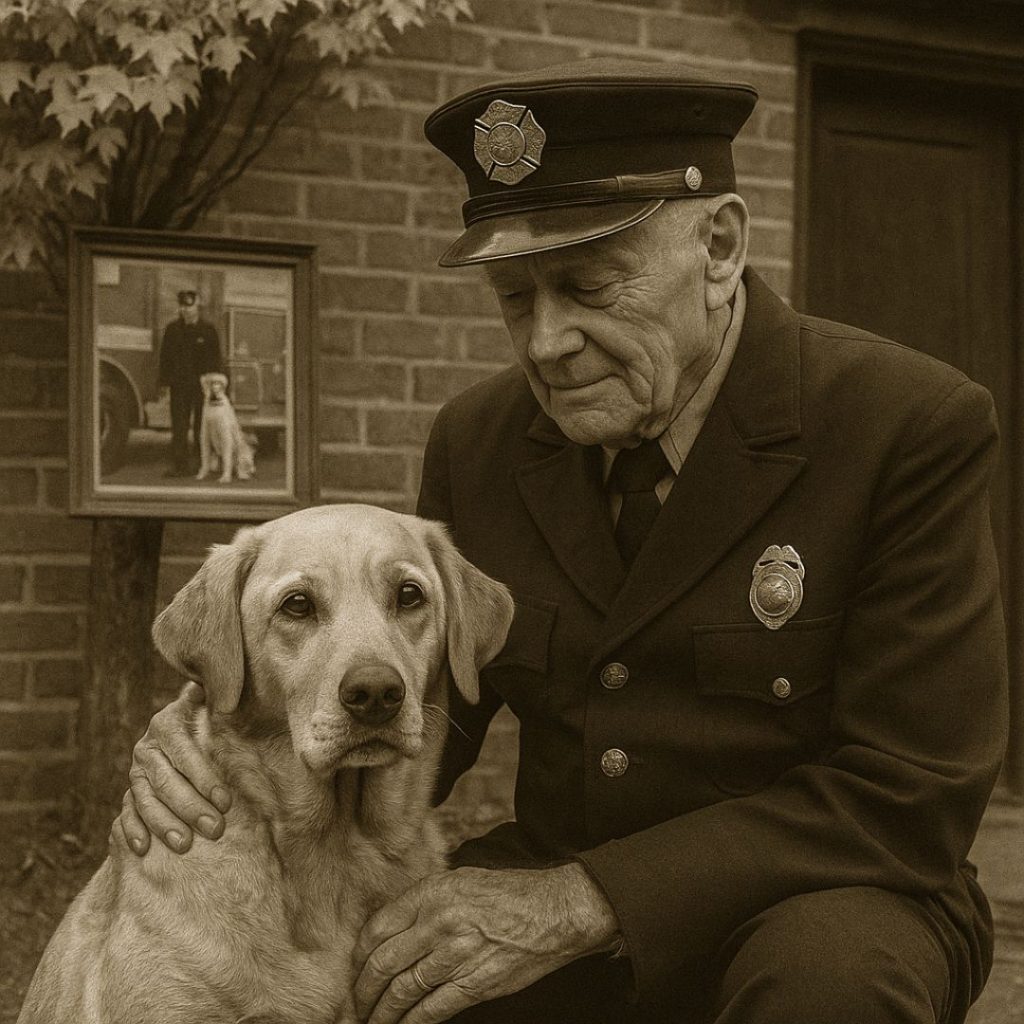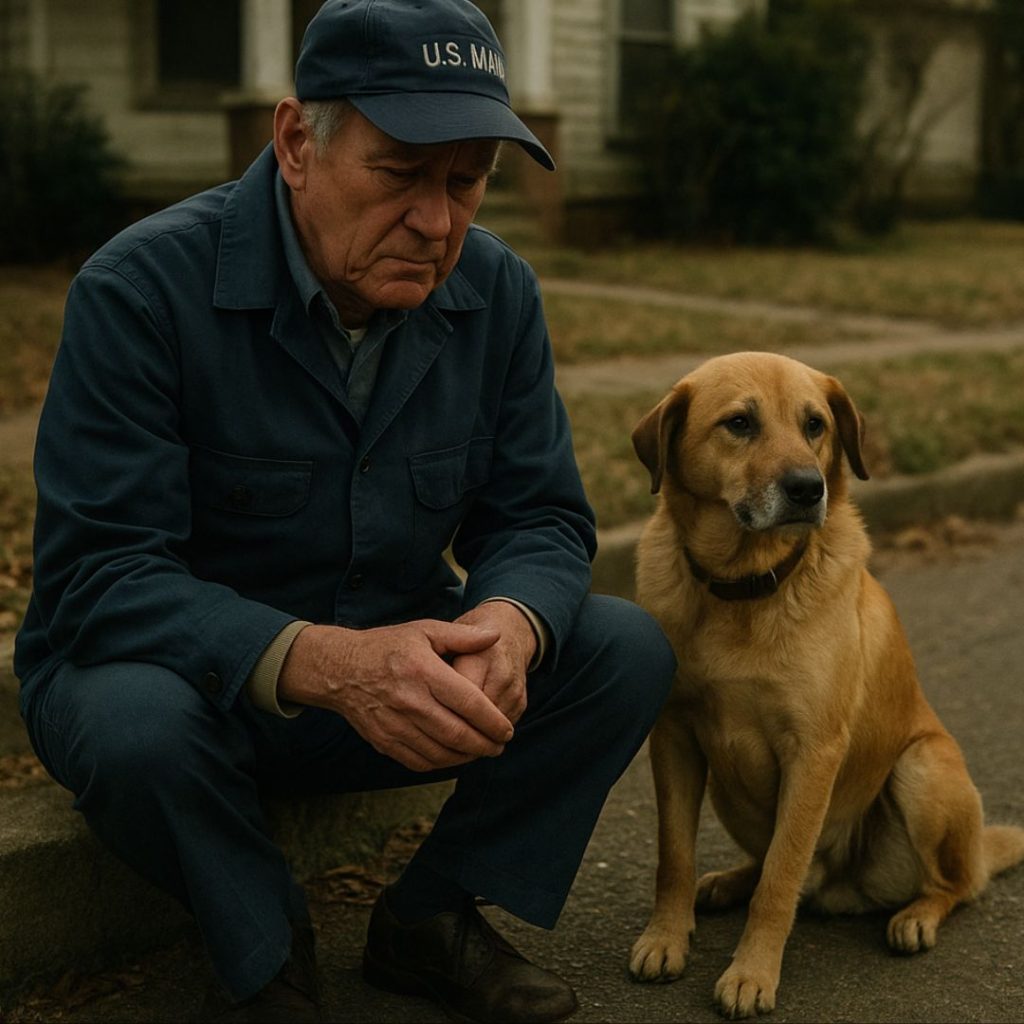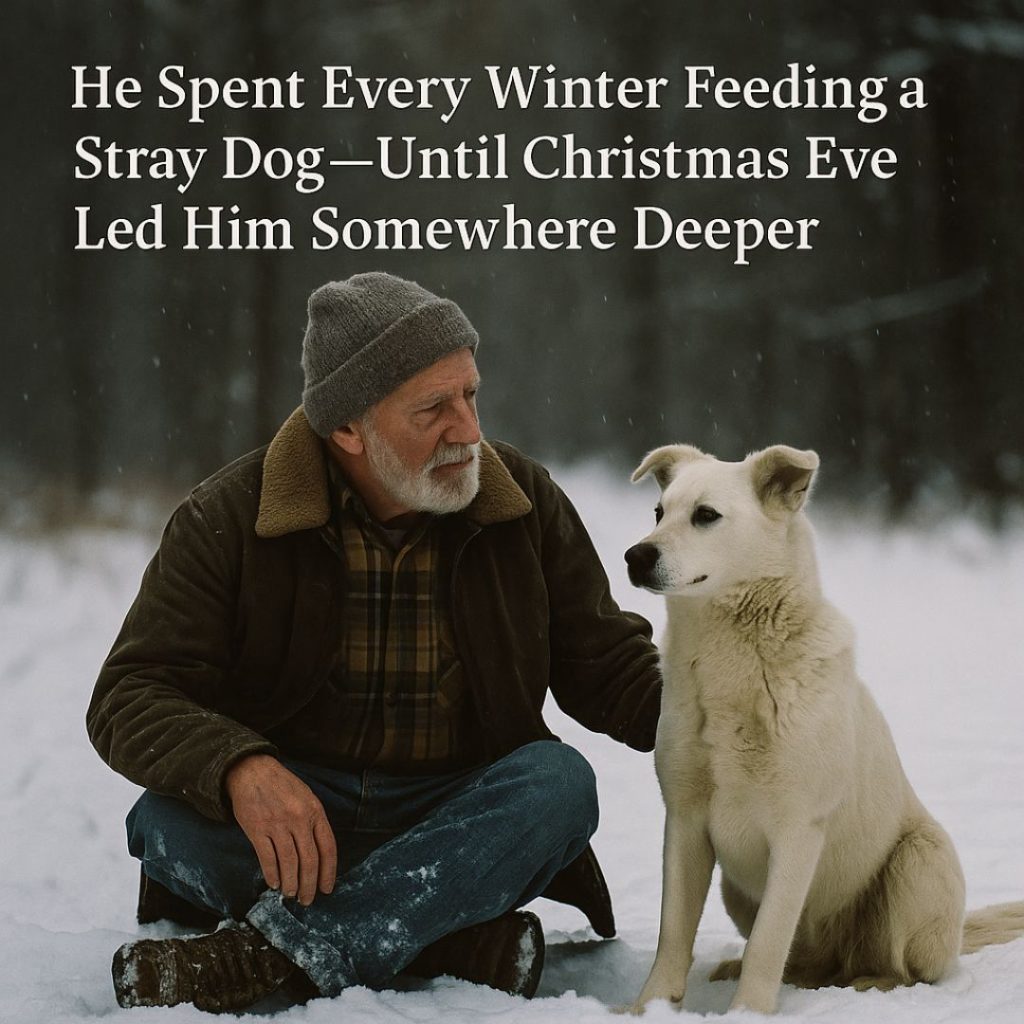📖 Part 5: The Legacy He Left
Spring came late that year.
The sugar maple in my backyard bloomed slowly, leaves unfurling like careful whispers. I stood there most mornings with my coffee, staring at the patch of earth where Ember rested.
It wasn’t grief that kept me still—it was gratitude.
And a kind of silence that only comes after something sacred.
But silence doesn’t mean stillness.
I didn’t know what to do with myself after Ember passed. The house was too quiet. His food bowl stayed by the door for weeks. I couldn’t bring myself to move it.
Then one Saturday morning, I opened the hall closet and pulled out the corkboard we used to hang the kids’ drawings on. I dusted it off, hammered it back onto the wall, and began pinning every card and picture I could find.
By the time I finished, the board was full—faces and crayon scribbles and crooked handwriting.
Each one said the same thing in its own way: You mattered. He mattered.
That’s when I decided.
We’d go back.
Not “we,” I guess. Just me.
But I’d bring him with me the only way I could now—through memory.
I called Principal Holloway first.
“Tommy,” she said after a long pause, her voice catching. “We’ve been waiting.”
I told her I wanted to return. No dog this time, but plenty of stories. She didn’t hesitate.
When I walked into Grover Elementary a week later, every hallway felt like it still echoed with Ember’s paws.
The kids were already seated, buzzing with questions. Some were new. Others—like Jordan—were older now, sitting tall at the back of the room.
“Where’s Ember?” a little girl asked.
I smiled. “He’s still here. Just in a different way.”
Then I reached into my gear bag and pulled out a framed photo—Ember in his vest, standing next to the fire engine, ears perked, scarred paw forward.
The room went still.
And I began.
I told them about Porter Street.
About the fire.
About the choice to carry something so small and fragile through the smoke.
I told them how a puppy who had no reason to trust the world became the most trusted part of mine.
I didn’t cry.
Not until the last part.
“Ember wasn’t just brave in the fire,” I said. “He was brave every time he walked into a room full of kids and chose love. Even when he hurt. Even when he was scared. That’s what courage really is.”
Then I looked at Jordan.
He stood slowly and held up his notebook.
“I wrote something,” he said, voice shaking. “Can I read it?”
I nodded.
He read:
“Courage is not the firetruck or the siren.
It’s the quiet dog who lays beside you.
Who never speaks but always hears.
Who burns but never runs.
I want to be like Ember—
Not loud. Not fast.
But brave in the soft places.”
The room was silent.
Even the teachers wiped their eyes.
I stepped forward and placed a hand on Jordan’s shoulder. “You already are, son.”
After that, the requests came in faster than I could answer.
Letters from teachers, coordinators, even retired firefighters who’d heard the story through the grapevine.
“Would you visit our town?”
“Can you talk to our kids?”
“Will you bring Ember’s picture?”
I started saying yes.
I packed up a new bag—Ember’s photo, his old vest, and a journal filled with notes from every visit we’d made together.
At every school, I told the same story. But each time, I saw something new in the eyes of those listening.
Not just admiration.
Reflection.
Ember had become more than a dog.
He was a symbol.
Of resilience.
Of kindness.
Of the quiet courage that doesn’t ask for medals.
One day, I visited the same trailer park where little Cassidy had lived. The one who’d asked if Ember remembered her fire.
She was older now—ten or eleven. Taller. Her freckles hadn’t faded, but her eyes were brighter.
When I showed her the photo of Ember, she pressed her hand to it gently.
“He looks peaceful,” she said.
“He was,” I replied. “Because of people like you.”
She looked up at me, serious. “I want to be a firefighter.”
I felt something shift inside my chest.
“Then you better learn what Ember knew.”
“What’s that?”
I leaned in. “You don’t have to run into fires to be a hero. Sometimes, you just have to sit beside someone who’s scared. And stay.”
She nodded. “I can do that.”
I believed her.
At home, the corkboard was full now. So I started another. And another.
By summer, I had three of them hanging in the hallway.
Each note, each drawing, each letter—proof that one dog, pulled from ashes, had sparked a thousand tiny fires of hope.
Ember was gone.
But his story?
It was just beginning.
📖 Part 6: A New Kind of Fire
By July, my calendar was fuller than it had ever been—even during my firefighting days.
Every week, I visited a new town, a new classroom, a new group of children who hadn’t met Ember but somehow already loved him. I didn’t charge a dime. Didn’t want to.
Ember had paid the price in full.
I wore his old vest folded neatly in my bag like a flag. His photo stood on a small easel wherever I spoke. The scarred paw, the gentle eyes—kids were drawn to it like moths to a lantern.
But something else started happening.
The kids weren’t just listening.
They were doing.
At Rosedale Elementary, a boy named Miles raised his hand after my talk.
“I started checking our smoke detectors,” he said proudly. “I taught my little sister how to stop, drop, and roll.”
At Lincoln Charter, a girl named Sofia stayed behind after class. “I told my grandpa he’s brave like Ember,” she whispered. “Because he’s sick, but he still smiles.”
And at a library event in Reidsville, a group of fifth-graders handed me a handmade book:
“Lessons From Ember.”
Inside were pages of drawings, poems, and quotes they’d remembered from my talks. The final page read:
“The world is full of fire. But there are Embers too.
They stay.
They shine.
They teach us how not to burn.”
I brought the book home and placed it beside Ember’s collar on the mantel.
That night, I sat in my recliner and stared at the empty spot on the rug where he used to sleep. Funny how something so simple could feel so vast when it’s gone.
But it wasn’t gone.
It had spread.
Like fire.
The good kind—the kind that cooks supper, warms homes, forges steel.
I realized I didn’t need to be in a classroom to keep his work alive.
I needed something bigger.
A few weeks later, I sat down at my kitchen table with a pen and a yellow legal pad.
And I wrote the words:
The Ember Project
It would be a program for kids, built on what Ember taught.
Not just fire safety—but resilience. Kindness. Quiet courage.
The kind that doesn’t wear capes.
The kind that stays.
I called Principal Holloway, then the Junior Shield coordinator, then an old friend from the Wilmington Fire Department who now worked in administration.
Every one of them said the same thing:
“Yes. Let’s do it.”
We started small.
Five schools in the district. A pilot program.
I visited each one and told Ember’s story—this time not just as memory, but as a mission.
Kids were given journals. Stickers that read “Be an Ember.” They wrote letters to people they admired. They performed small acts of kindness. They sat beside kids at lunch who didn’t have anyone else.
We didn’t call it fire safety anymore.
We called it fire wisdom.
In early fall, I was invited to speak at the state elementary school conference.
I stood on a big stage, Ember’s photo behind me, and told a room full of teachers and principals how one half-burned puppy had taught me more than thirty years of firefighting ever had.
I ended with this:
“Firefighters don’t just fight flames. They run toward danger because someone might be inside. Ember did the same thing in a quieter way. He ran toward fear. Toward sadness. And he sat beside it.
You don’t have to run into a building to be brave.
Sometimes, you just have to stay.”
After the talk, dozens came up to shake my hand. A few hugged me. One woman whispered, “I lost my dog last year. Thank you for reminding me that love doesn’t burn out.”
That night, alone in my hotel room, I looked out at the city lights and said softly to the empty air:
“We did good, partner.”
I don’t know if he heard me.
But I’d like to think he did.
The Ember Project expanded that fall to 22 schools.
I couldn’t visit every one—but the stories kept coming.
A boy in New Bern made a “Kindness Corner” in his classroom.
A girl in Durham wrote a letter every week to a retired veteran she’d never met.
And at Grover Elementary, Jordan—now twelve—started volunteering at the animal shelter.
He wrote me a letter I still keep in my coat pocket:
“Mr. Greaves, I think Ember would’ve liked this place. It’s loud sometimes, and some of the dogs are scared, but I sit with them until they’re not. I tell them his story. I think they understand.”
The fire that started in one old closet had turned into something much more.
Not a blaze.
Not destruction.
But warmth.
Guidance.
Legacy.
The kind of fire that lights candles.
The kind of fire that never dies.


